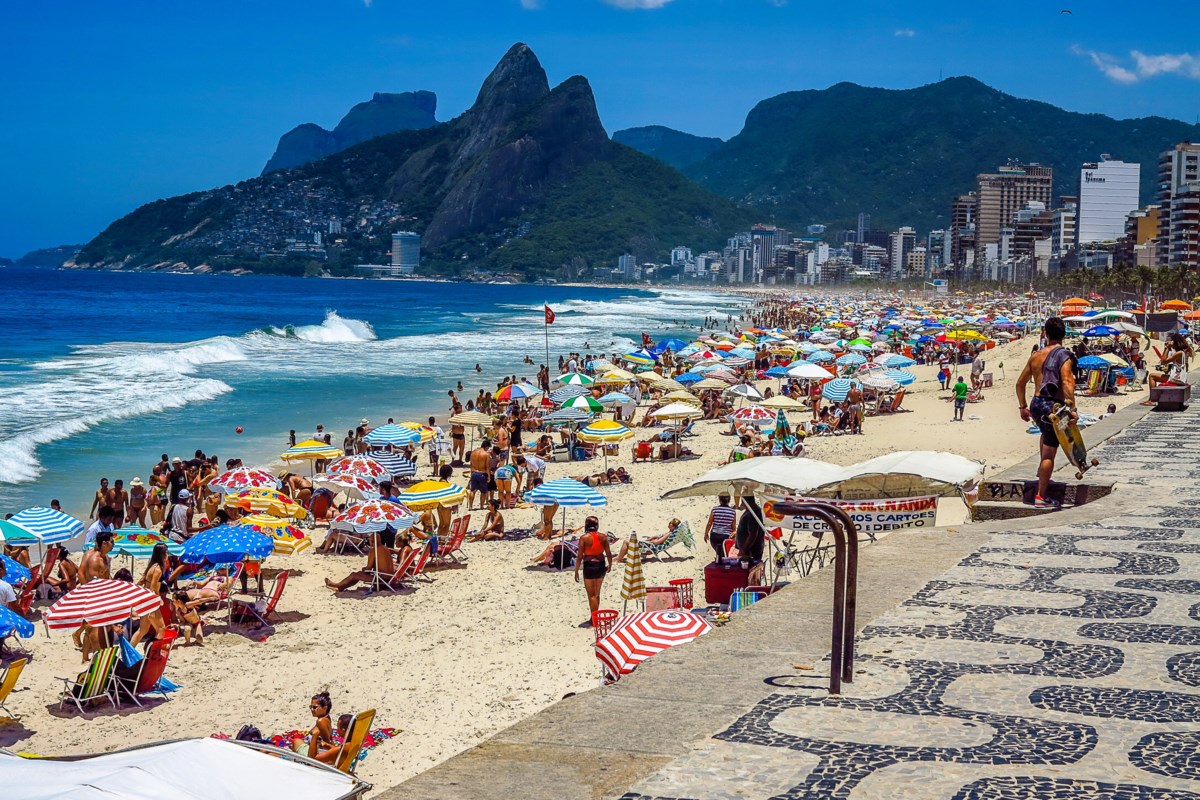No products in the cart.
Healing
Travel: Surf, websites and samba in Rio de Janeiro
Destinations await the intrepid traveler.
Tropical rain forests, white sandy beaches and monolithic mountains surround the waterway into this famed Brazilian resort city.
I can imagine the euphoria of the Portuguese explorers who first sailed into the stunning Guanabara Bay in January of 1502 and, thinking it was a river, named it Rio de Janeiro (River of January), which became the city’s name.
After stowing our luggage in our hotel room, my husband Rick and I hastily don beach wear and walk the length of Copacabana with its profusion of umbrellas and bronzing bodies in “fio dentals” (‘dental floss’is the local lingo for scanty bikinis).
The next day, we do the same at Ipanema, but this time our mission is to stake out a spot for our rented umbrella and loungers to swelter in the glorious day as inert as granules of sand.
Fitting in with our mood, a tour is the most relaxing way to visit the iconic sites of the city with Juliana, our guide.
We make our way from our deluxe bus to the escalators that rise to the top of Corcovado (Hunchback) Mountain where Christ the Redeemer gazes over Rio.
Juliana doles out some facts, “Built between 1922 and 1931, this art deco creation of concrete and soapstone stands 30 metres tall, not including the 8 metre base; arms stretching out 28 metres and weighing in at 635 metric tons.”
The limited space in front of this behemoth is packed with people posing; cameras clicking. Looking upward, the din around me dulls with the peaceful aura of this symbol of Christianity against the heavenly azure sky.
It’s next to Sugarloaf Mountain rising 396 metres on a peninsula jutting out into the Atlantic Ocean.
The name Sugarloaf was coined in the 16th century for its shape resembling the blocks of sugar placed in conical moulds of clay to be transported by ship to trade destinations.
Cable cars bring us to the summit for a spectacular view of the city.
Refuelling from snack-shops on the wide deck, we settle on the ample seating for a breather before our next site. “That’s a cathedral?” I question, as I lift my gaze to the gigantic pyramid.
“The shape of the Metropolitan Cathedral of Saint Sebastian honours the Mayan ancestry of Brazil’s indigenous tribes,” says Juliana.
The scope of the 5,000 seating capacity interior with floor to ceiling stained glass panels is jaw-dropping. Our last stop is to the 250 dazzling and dizzying Selaron Steps with their adornment of 2,000 tiles collected from 60 countries around the world. In 1990, Chilean-born artist Jorge Selaron began renovating the dilapidated steps in front of his house.
Mocking neighbours only served to turn his whim into a full-blown obsession, bringing him international acclaim. Samba, samba, samba… the annual competition for this African-rooted music and dance style originating in Brazil is weeks away and our visits to local markets (which I never miss) are delightfully dotted with dancers dressed in their flamboyant samba costumes to promote the event held in conjunction with Rio Carnival.
The steep hillsides around the city are jammed with favelas (shantytowns). Hoping to gain insight into a favelas’ inner world, we join a small tour group to visit Rocinha, one of the largest in Rio.
“The favelas are where drug traffickers and organized crime gangs called “militias” rule, although police units are aimed at stopping them,” says our guide Fernandi. We are lead through the maze of seemingly ready-to-topple dwellings, with steps branching off to higher and higher levels.
It’s a long treacherous walk to and from work for the inhabitants — many employed in Rio’s big hotels, restaurants or construction industry. “Most of the favelas do not have proper infrastructure,” says Fernandi.
“The residents rig up their own water and sewage and electricity.”
We can vouch for the latter as we walk under wires hanging overhead like a hearty portion of “al dente” cooked spaghetti.
Some residents greet us as we walk by, kids run past at play, skeletal cats and dogs make quiet fleeting appearances.
Ladies chit-chat from their doorways; a few men sit on steps having a smoke. There is a strong sense of community.
It is back to ocean dips and lazing on the beach of Ipanema for our last day this “cidade maravilhosa” (marvelous city in Portuguese).
Our experience in this metropolis of grand sites was always enhanced by friendly locals with a zest for life.
Travel Writers’ Tales is an independent newspaper column. For more, go online to travelwriterstales.com.

